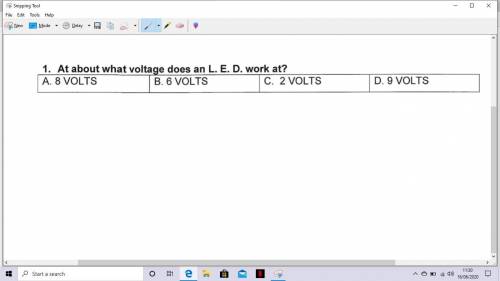A, B , C, or D? Please help
...

Computers and Technology, 16.06.2020 14:57 rene27
A, B , C, or D? Please help


Answers: 3


Other questions on the subject: Computers and Technology

Computers and Technology, 22.06.2019 22:40, nsuleban9524
When you type the pwd command, you notice that your current location on the linux filesystem is the /usr/local directory. answer the following questions, assuming that your current directory is /usr/local for each question. a. which command could you use to change to the /usr directory using an absolute pathname? b. which command could you use to change to the /usr directory using a relative pathname? c. which command could you use to change to the /usr/local/share/info directory using an absolute pathname? d. which command could you use to change to the /usr/local/share/info directory using a relative pathname? e. which command could you use to change to the /etc directory using an absolute pathname? f. which command could you use to change to the /etc directory using a relative pathname?
Answers: 3


Computers and Technology, 23.06.2019 15:00, victordhernandez01
Jake really works well with numbers and is skilled with computers but doesn't work well with others. which of the jobs discussed in this unit might be best for jake? why?
Answers: 3

Computers and Technology, 23.06.2019 17:30, Annlee23
When making changes to optimize part of a processor, it is often the case that speeding up one type of instruction comes at the cost of slowing down something else. for example, if we put in a complicated fast floating-point unit, that takes space, and something might have to be moved farther away from the middle to accommodate it, adding an extra cycle in delay to reach that unit. the basic amdahl's law equation does not take into account this trade-off. a. if the new fast floating-point unit speeds up floating-point operations by, on average, 2ă—, and floating-point operations take 20% of the original program's execution time, what is the overall speedup (ignoring the penalty to any other instructions)? b. now assume that speeding up the floating-point unit slowed down data cache accesses, resulting in a 1.5ă— slowdown (or 2/3 speedup). data cache accesses consume 10% of the execution time. what is the overall speedup now? c. after implementing the new floating-point operations, what percentage of execution time is spent on floating-point operations? what percentage is spent on data cache accesses?
Answers: 2
You know the right answer?
Questions in other subjects:


Mathematics, 20.11.2019 05:31

Mathematics, 20.11.2019 05:31

Mathematics, 20.11.2019 05:31

Mathematics, 20.11.2019 05:31



Mathematics, 20.11.2019 05:31





